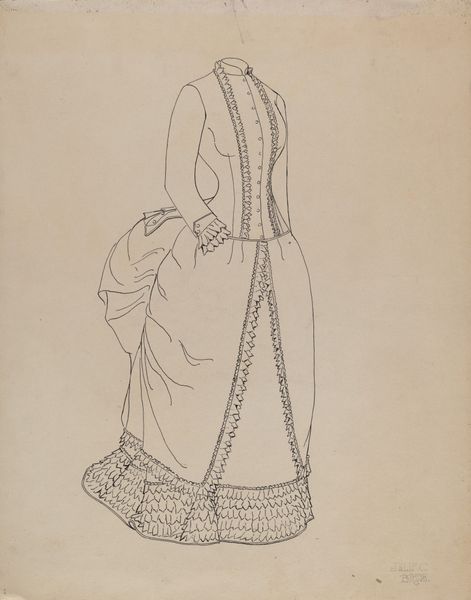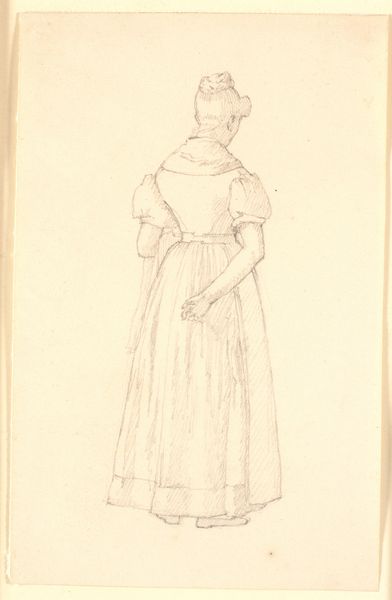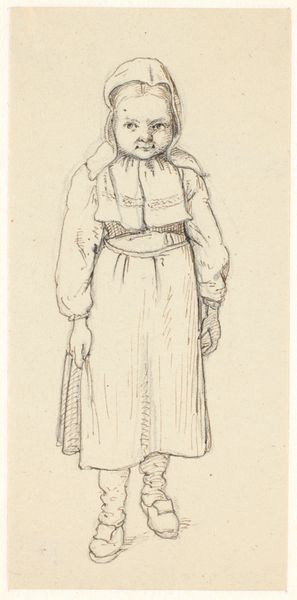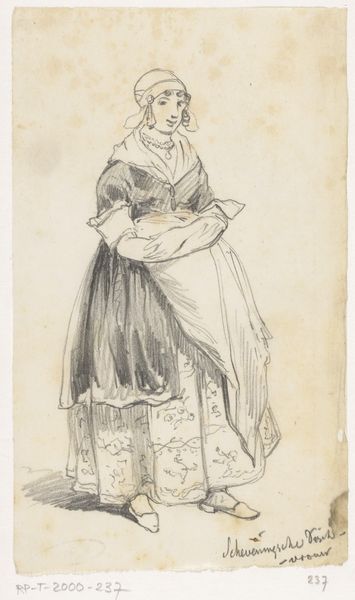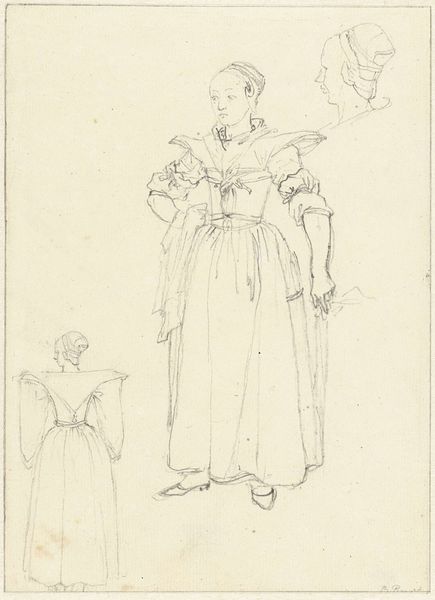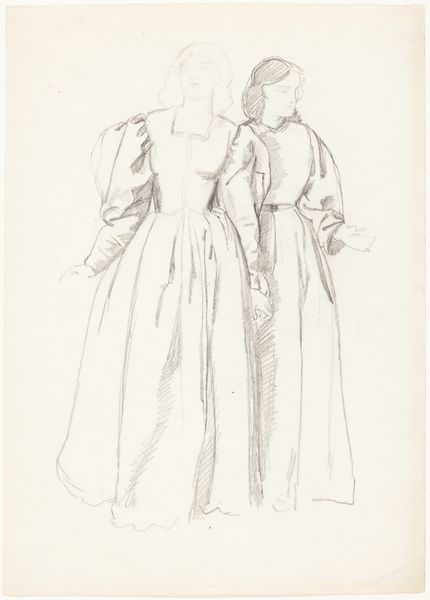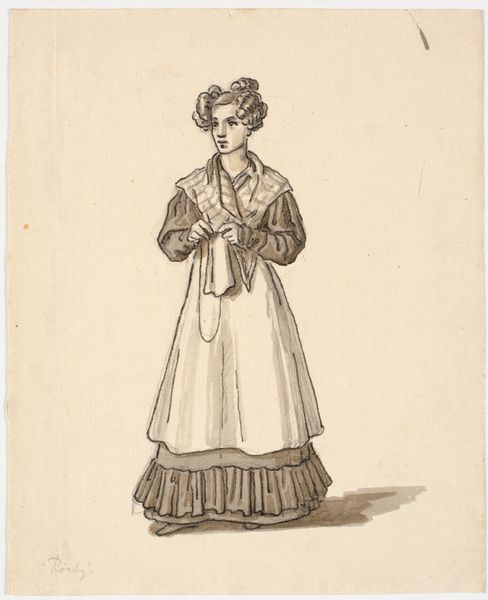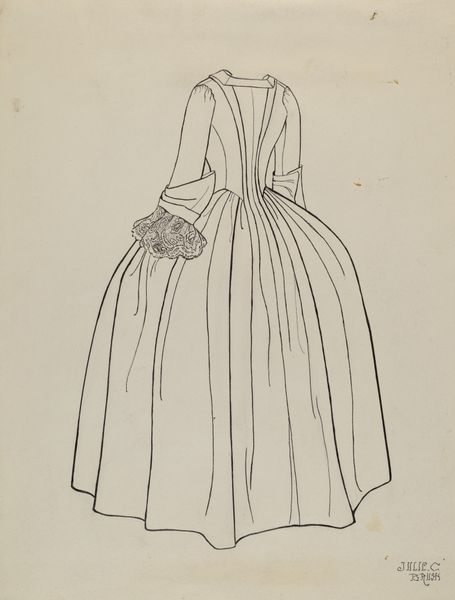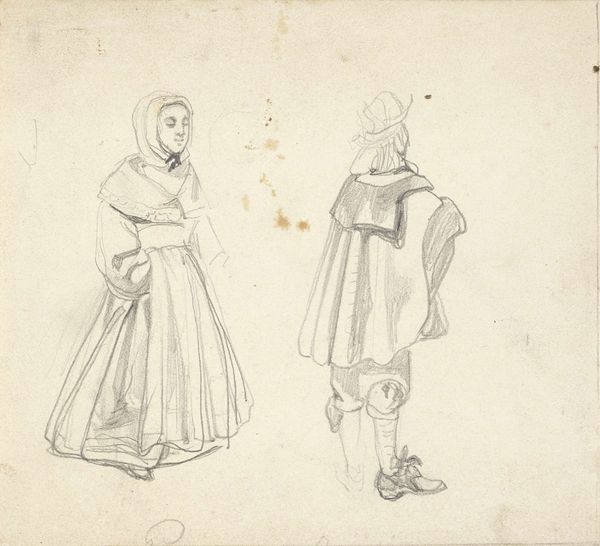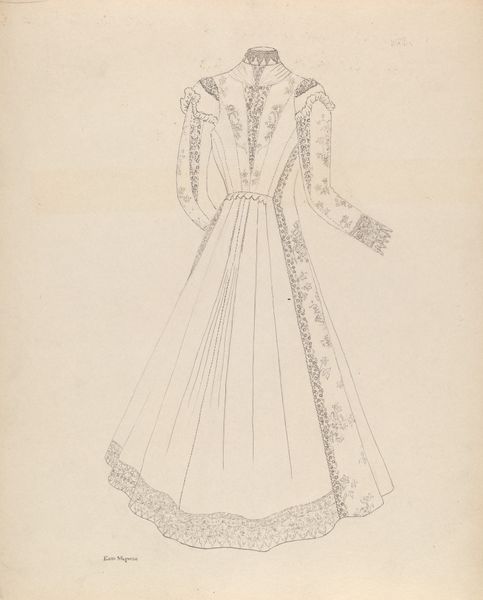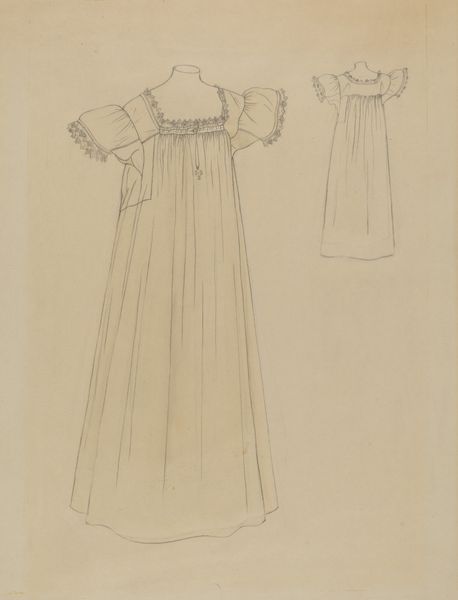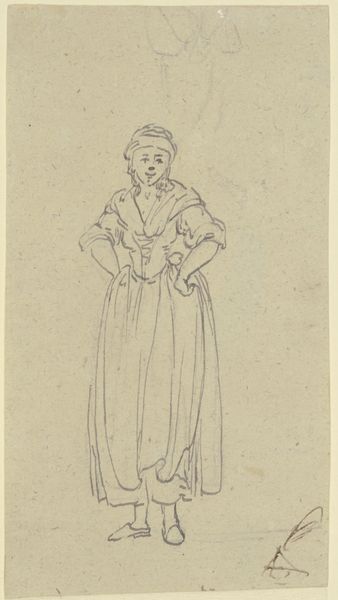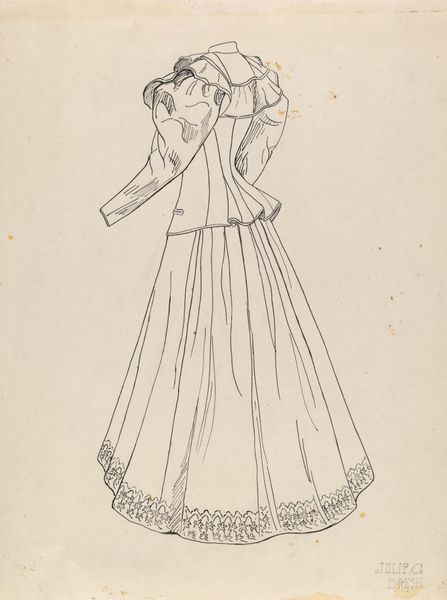
Marieth Gullich's Datter Lia af Svenne Anex til Fleibergs Præstegjæld i Numedalen 1830
0:00
0:00
drawing, pencil
#
portrait
#
drawing
#
pencil sketch
#
figuration
#
romanticism
#
pencil
#
sketchbook drawing
#
genre-painting
Dimensions: 272 mm (height) x 189 mm (width) (bladmaal)
Curator: This drawing, crafted by Martinus Rørbye in 1830, is titled "Marieth Gullich's Datter Lia af Svenne Anex til Fleibergs Præstegjæld i Numedalen." It's currently housed here at the SMK. Editor: It's quite delicate. I'm immediately drawn to the precision of the pencil work, especially the detail in the figure’s garments and how Rørbye captured the texture of the fabrics. Curator: Indeed. Rørbye, during his travels through Norway, was clearly interested in documenting local customs and costumes. He was actively participating in constructing an image of regional and national identity through art. Editor: And you can see that material reality taking shape, literally. The tight lines of the jacket, contrasting with the flowing skirt—how are those materials sourced, made, consumed within her community? The slight sheen he captures must depend upon thread and dye quality. Curator: Precisely. The act of sketching these figures serves a political function; these images entered circulation at a time when Norway sought its identity and separation from other regional powers. Genre paintings and figuration offered a distinct mode of representing the local and the real. Editor: It feels more like careful observation than romantic idealization. Her hands clasped modestly, the plain but sturdy clothes—Rørbye focuses on the details of everyday life. Who was she making these garments for, and what labor did it represent? Curator: The portrait also functions as an ethnographic study, attempting to preserve and understand the practices of rural life as a modernizing Norway became integrated in global flows of manufacturing and political movements. This image certainly caters to the emerging nationalism of the era. Editor: Absolutely. Even in the simple medium of pencil, we glimpse a network of labor, skill, and consumption tied directly to social life. Looking at it, I'm compelled to examine the material culture it depicts, not only what is represented, but its social circulation too. Curator: Thinking about it, what I find striking is that we still connect with it on an aesthetic level after so many years, perhaps because the material realities remain in some ways unchanged, and some of our core values around family, community, and representation resonate today. Editor: Yes, in looking at the techniques and historical record, one can understand how art like this played a role in constructing broader cultural values related to labor and national character.
Comments
No comments
Be the first to comment and join the conversation on the ultimate creative platform.
